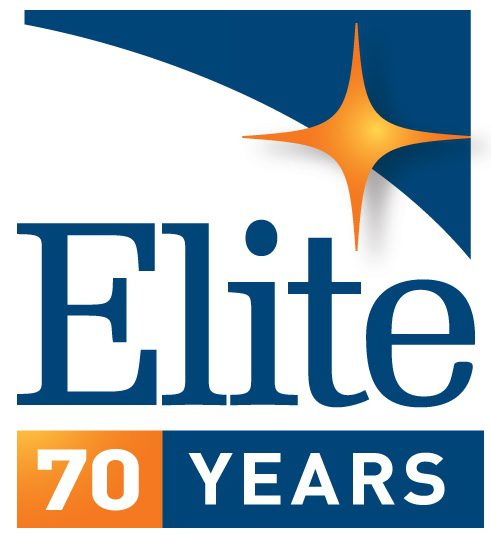September 27, 2022
Anyone who has been out at night in open country knows what dark really means. Stepping outside on a moonless night can be a jarring experience. Most of us have lived our lives bathed in outdoor light, whether from streetlights, vehicle headlights, flashlights, or even candles. Given enough time in the darkness, eyes adjust enough to make out forms, but not enough to see trip hazards or colors.
That’s an inconvenience for most. But for military members or first responders, the inability to see in the dark with better resolution can make the difference in a survival or rescue situation. The central components of a night vision imaging system (NVIS) are the night vision goggles (NVG) worn by operators in those conditions. NVGs electronically amplify the available visible and infrared light for the operator, allowing finer detail to be seen.

Night vision imaging system in the cockpit
For NVIS to be useful, the ambient light from instruments and other sources must not compete with the enhanced view seen by the operator. This is especially true for NVG-equipped aircraft pilots and vehicle drivers carrying out covert missions in total darkness. The environment of instrument displays and indicators need to be visible to dark-adjusted eyes without interfering with the NVG’s ability to amplify the outside environment.
Lighting Equipment Categories and Requirements
Several categories of lighting and marking equipment are listed in MIL-STD-3009, including backlit displays, instrument panels, buttons, switches, indicators, and area illumination. The basic requirement for NVIS Compatible lighting equipment is that it can be viewed comfortably by the naked eye and that it not interfere with the NVIS. NVGs are typically used to view the surrounding environment while operators look under NVG to view close-up instruments with dark-adjusted vision. However, exterior lighting used to mark aircraft, vehicles, roads, and runways can be designed using infrared sources to be invisible to the naked eye while appearing through NVGs. Depending on the application, lighting equipment falls into three main categories:
- “NVIS Compatible” lighting in an instrument panel, backlit display, or interior lighting needs to be visible by the naked eye while not being at a level or color that would interfere with the operation of the NVG.
- “NVIS Friendly” lighting can be viewed through the NVG without saturating the view or have blooming effects. This could apply to interior or exterior lighting systems.
- “Dual Mode” lighting can be selected to be visible to the naked eye or through NVGs only. This typically applies to exterior lighting equipment used to mark vehicles or locations, such as wingtip lights and runway edge lighting, so they can operate in total darkness without being detected.

NVIS Friendly or Dual Mode lighting viewed through NVIS
Colors
Colors of illuminated symbols and numbers displayed on instruments need to meet requirements for chromaticity, which is the quality of color. Four colors are defined and given specific chromaticity values in MIL-STD-3009 – NVIS Green A and B, NVIS Yellow, NVIS Red, and NVIS White. The reference points from the CIE 1976 color space reference standard are shown in the figure below.

NVIS lighting chromaticity limits from MIL-STD-3009

NVIS-compatible spectral response from MIL-STD-3009
Standardizing a set of compatible colors assures that light sources will be consistent and compatible with night-vision equipment in all applications. MIL-STD-3009 defines three classes of NVIS filters based on wavelength. The filter relative responses are shown as A, B, and C in the response curves in the figure above.
Spectral Radiance and NVIS Radiance
Spectral Radiance (mW/cm2) is the primary measurement used to determine NVIS compatibility. Because of the extremely low visible light and infrared limits, Elite’s Photometric Testing lab is equipped with a high precision spectroradiometer and dark room to ensure, repeatable accurate measurements. The raw spectral radiance values are then weighted and scaled based on the NVG filter response to calculate NVIS Radiance (NRa and NRb). The specifics for those limits and the measurement techniques are contained in MIL-STD-3009, MIL-L-85762A, and SAE ARP5825A.

Spectral radiance test setup, showing positions for reflected radiant intensity and direct radiance

Spectral radiance test setup in Elite’s photometry lab
Radiant Intensity (mW/sr) is spectral radiance measured from a Lambertian reflectance plaque, which provides a standard reference for determining the beam pattern of the light source. A goniometer (positioner) is used to rotate the light source to point varying angles at the reflectance plaque. The same weighting and scaling are applied to calculate NVIS Radiant Intensity (NRIa and NRIb) typically required for exterior, marking, and signal lighting equipment.
Tests are typically done with multiple samples measured at different levels and angles. Extremely low light sources take more time to measure and add to the overall time required for the test project.
NVIS Compatibility Testing at Elite
Elite is equipped to perform the full range of NVIS compatibility tests assuring compliance with MIL-STD-3009, MIL-L-85762A, and SAE ARP5825A. Contact the experts at Elite for information on NVIS requirements and how they apply to your product. Put Elite’s industry-recognized expertise to work for you.
